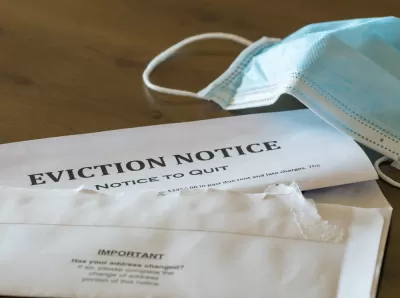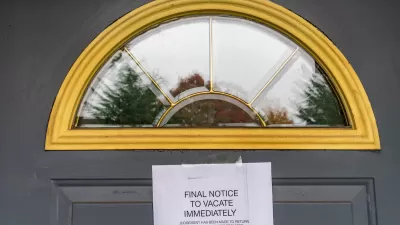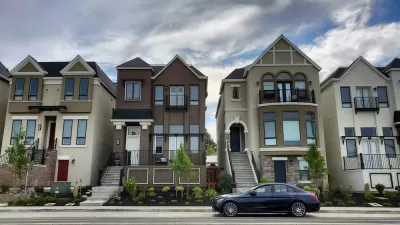Despite efforts to implement rental assistance programs and eviction moratoriums during the COVID-19 pandemic, tens of thousands of California households were served eviction notices last year, with more falling behind on rent payments.

Close to 36,000 California households were hit with eviction notices in the 2021 fiscal year (from July 1, 2020 to June 30, 2021). According to an article by Lauren Hepler and Raheem Hosseini in the San Francisco Chronicle, “Those numbers don’t include many tenants who left under threat of eviction, negotiated move-out deals or who still owe back rent from the pandemic — groups that advocates warn are hard to track and still growing as emergency state renter protections expire.”
The authors write that “The data comes from the most recent annual report by the Judicial Branch of California and underscores the limits of state efforts to mute the pandemic’s effects on financially vulnerable residents. Renter advocates fear it’s also a preview of evictions to come after two years of upheaval in one of the country’s most expensive places to live.” About 11 percent of the eviction filings were in the San Francisco Bay Area, primarily in Santa Clara, Contra Costa, and San Francisco counties.
“Statewide eviction protections that were cobbled together in real time from gubernatorial executive orders, state judicial decrees, public health orders and legislative action were supposed to buy time for residential tenants struggling to pay rent and other living costs as a result of pandemic economic quakes. The protections were extended multiple times, and finally expired after 27 months on July 1.” Now, the future of tenants across the state is uncertain. According to the National Equity Atlas, 738,000 California households are behind on rent as of May 2022.

Planetizen Federal Action Tracker
A weekly monitor of how Trump’s orders and actions are impacting planners and planning in America.

Congressman Proposes Bill to Rename DC Metro “Trump Train”
The Make Autorail Great Again Act would withhold federal funding to the system until the Washington Metropolitan Area Transit Authority (WMATA), rebrands as the Washington Metropolitan Authority for Greater Access (WMAGA).

DARTSpace Platform Streamlines Dallas TOD Application Process
The Dallas transit agency hopes a shorter permitting timeline will boost transit-oriented development around rail stations.

Renters Now Outnumber Homeowners in Over 200 US Suburbs
High housing costs in city centers and the new-found flexibility offered by remote work are pushing more renters to suburban areas.

The Tiny, Adorable $7,000 Car Turning Japan Onto EVs
The single seat Mibot charges from a regular plug as quickly as an iPad, and is about half the price of an average EV.

Supreme Court Ruling in Pipeline Case Guts Federal Environmental Law
The decision limits the scope of a federal law that mandates extensive environmental impact reviews of energy, infrastructure, and transportation projects.
Urban Design for Planners 1: Software Tools
This six-course series explores essential urban design concepts using open source software and equips planners with the tools they need to participate fully in the urban design process.
Planning for Universal Design
Learn the tools for implementing Universal Design in planning regulations.
Municipality of Princeton
Roanoke Valley-Alleghany Regional Commission
City of Mt Shasta
City of Camden Redevelopment Agency
City of Astoria
Transportation Research & Education Center (TREC) at Portland State University
US High Speed Rail Association
City of Camden Redevelopment Agency
Municipality of Princeton (NJ)





























